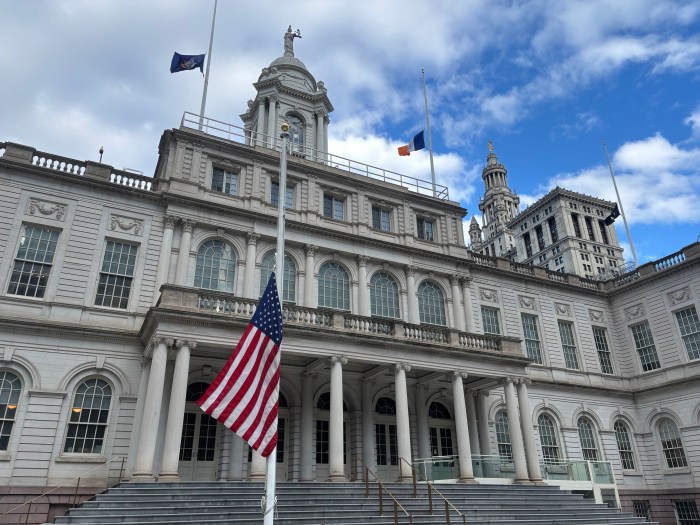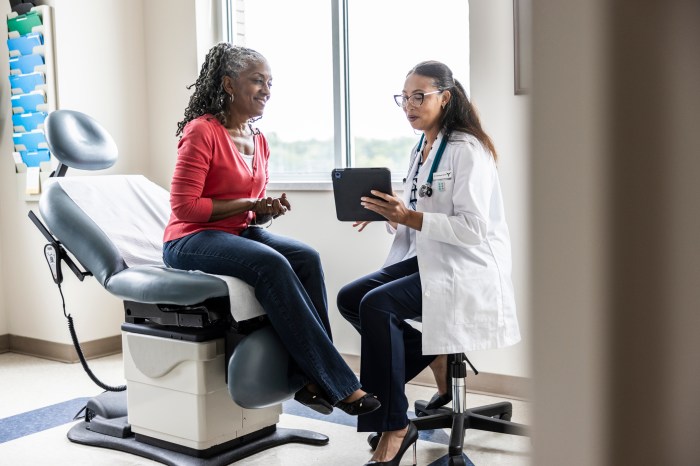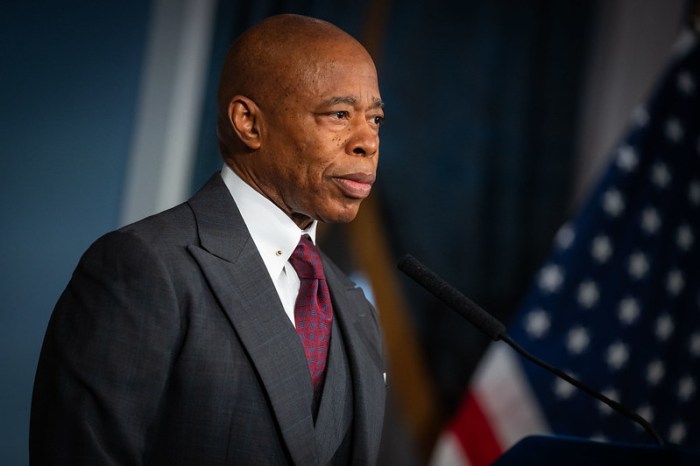BY KAITLYN MEADE | Agueda Batista, 33, was sitting in a hotel room on 47th St., rocking her 2 month old, Hunter. Despite being in the same city, it couldn’t be more different from her home in Rockaway Park, which had become a disaster zone when Sandy roared in two weeks earlier, taking the bay with it. “I remember sitting there thinking, ‘Oh my goodness, this is crazy,’” she said.
Batista and her husband had spent 12 days after the hurricane trapped in their eleventh floor apartment with no electricity, heat, water or open supermarket nearby. The food had gone bad and only the intervention of a neighbor with extra canned provisions had kept their situation from becoming desperate. When her brother had finally come to pick them up and drive them to the hotel, they piled in with as much as they could carry.
The hotel was the closest one Batista could find to her school, Downtown’s Borough of Manhattan Community College where she is a business administration major. She had switched to part time at the beginning of the semester so that she could spend more time with her newborn baby, but she hadn’t counted on the added difficulties Sandy would impose.
“My baby was already outside his comfort zone. He wouldn’t eat. I had to go back to the hotel between classes to feed him,” Batista said in a phone interview.
Then Batista received an email that she said changed her outlook.
It was the same e-mail that B.M.C.C. had sent out to all students in affected zip codes, asking them to fill out a questionnaire about their needs. “I felt so taken care of with that email alone,” Batista said. She filled it out and sent it in. A few days later, she walked into the Single Stop U.S.A. office, an organization on nine New York community college campuses, that helps students apply for federal aid, tax preparation, legal and financial counsel. In the wake of Sandy, they became the B.M.C.C.’s central office for helping Sandy’s victims get back on their feet.
Batista decided to take her bills with her, which had been piling up. “I decided to just share,” she said, though she was apprehensive about doing so. “Before you know it, I got awarded help with my bills!” She also received a MetroCard to get to and from school. “I’m so grateful they reached out to us when they did,” she said.
Batista was one of about 7,000 B.M.C.C. students living in affected zones, from Downtown’s Flood Zone A to Staten Island to Canarsie and the Rockaways. B.M.C.C., no stranger to crisis, lost a building on 9/11, but a new type of response was needed this time.
“It was different because this time around, it impacted not just the school, but their neighborhoods as well,” said Marva Craig, vice president of student affairs.
As opposed to the three-week closure after 9/11, B.M.C.C. was only closed for a week after Sandy, and during that time remained in constant contact with students through e-mail and social media. They quickly realized that while the campus was in relatively good shape, many of the students were not.
B.M.C.C. was provided with a list of impacted zip codes by government officials. They ran that list against the records of enrollment and sent e-mails — like the one Batista received — asking students to detail their needs.
For some students, the primary need was for information. With transportation down, limited cell service and power outages, many students felt stranded.
“The tears came to my eyes when a student wrote and said, ‘I am having a hard time with this problem, please help me, just tell me how to get there,’” The student was in Far Rockaway and just wanted to know how to get here,” Craig said of the initial confusion in the first week after the school reopened.
For others, there was a need for more immediate and drastic help.
One such student, 25, who asked to be identified as “Leah” for privacy reasons, was flooded out of her basement apartment in Rockaway Park. The landlord reported that water was 8 feet high — as high as the ceiling. Where the water met the ceiling tiles they peeled away like wet paper, she said. “If I was in there, I would have drowned.”
Leah was renting the space from her fiancé’s father. It was a good price and it meant they could be closer. But it also meant that he felt able to treat her more informally than he would another tenant. She came back to her apartment after the storm to find most of her belongings in a pile on the curb. Some of it had already been thrown out.
“I didn’t have a chance to go through it,” she said. “He wanted to get rid of it to clean out his basement.” The sense of betrayal was not just in the fact that that her things had gotten thrown away, but that she had not been notified beforehand.
“I lost everything. I have proof,” she said, flipping through photos on her phone, including her textbooks, clothing, important documents, furniture and laptop. It wasn’t just the loss of necessities that upset her — it was losing her pictures, her school certificates, the sentimental objects that had made her place feel like home.
One of the most devastating losses was her wedding dress, a white confection with red detailing that she got on sale at David’s Bridal for $200. Immersed in salt and sewage water, the dress can be repaired at David’s for an additional $139 — nearly as much as the garment itself. The ring, which they had planned on getting custom made, is on hold until the couple can figure out their finances. The wedding is also on hold, though they had planned to get married next year.
Recovery has been a long and ongoing process. Before Sandy, she was balancing two jobs and two degree programs (B.M.C.C. and cosmetology school).
“I was making a decent living,” Leah said. “It was all turned around in the blink of an eye. It was that fast.”
One of her jobs was flooded out and shut down, her business administration degree may come later than expected and she is currently trying to catch up on homework on the school’s computers when not looking for an apartment online.
She also applied at B.M.C.C.’s Single Stop Office for emergency funds and is waiting on approval. Specifically, she is hoping to get funds to put down the initial first and last month’s rent on an apartment.
“When I speak to a realtor, they say, ‘Ah, well. How can you prove to me that you can bring in the monthly rent?’” she explained.
Until then, she is starting a new job at Ann Taylor LOFT and is staying with her mother. She is trying to remain “mentally strong” for her mother and her fiancé as well as for herself. “I’m dealing with it. If help wasn’t available, I’d probably be in a worse state mentally speaking,” she said. “I’d probably do something crazy.”
Leah is one of about 40 students with applications still being reviewed by the Single Stop Office, who have already helped approximately 60 students with various needs from food stamps, to transportation to counseling.
“We have a board, and they gave us the first $25,000 and Single Stop U.S.A. gave us $25,000 to provide for our students,” said Craig. “We decided to funnel all our students through Single Stop — they can come in and fill out forms and outline their needs and concerns. All in one place.”
Deborah Harte, who runs B.M.C.C.’s Single Stop Office, said she’s concerned some may not be asking for help because they don’t have legal documentation.
“One of my concerns with any tragedy is that that population will not readily come forward for these services out of fear of being reported,” said Harte. “We have to assure them that we don’t report. We collect documentation where we can for our funders…but not to the degree where we put them through the mill.” She added that there is no way to identify undocumented students unless they volunteer that information.
For those that do come forward, the office facilitates SNAP and D-SNAP (Disaster Supplemental Nutrition Assistance Program) applications for food stamps, helps students rent books, find housing and attend counseling. The school has also extended the withdrawal deadline for students impacted by Sandy.
But Harte was surprised by how many refused to drop courses, even in the face of adversity. “They were so convinced that despite everything, they could still continue their lives with some degree of normalcy.”
For Batista, that meant moving back to Rockaway Park after the lights came on. However, she has been making the trek to school, with the support of her husband. “It’s challenging. You have to put your positive thoughts to work,” she said. And B.M.C.C. has been instrumental making that happen.

































